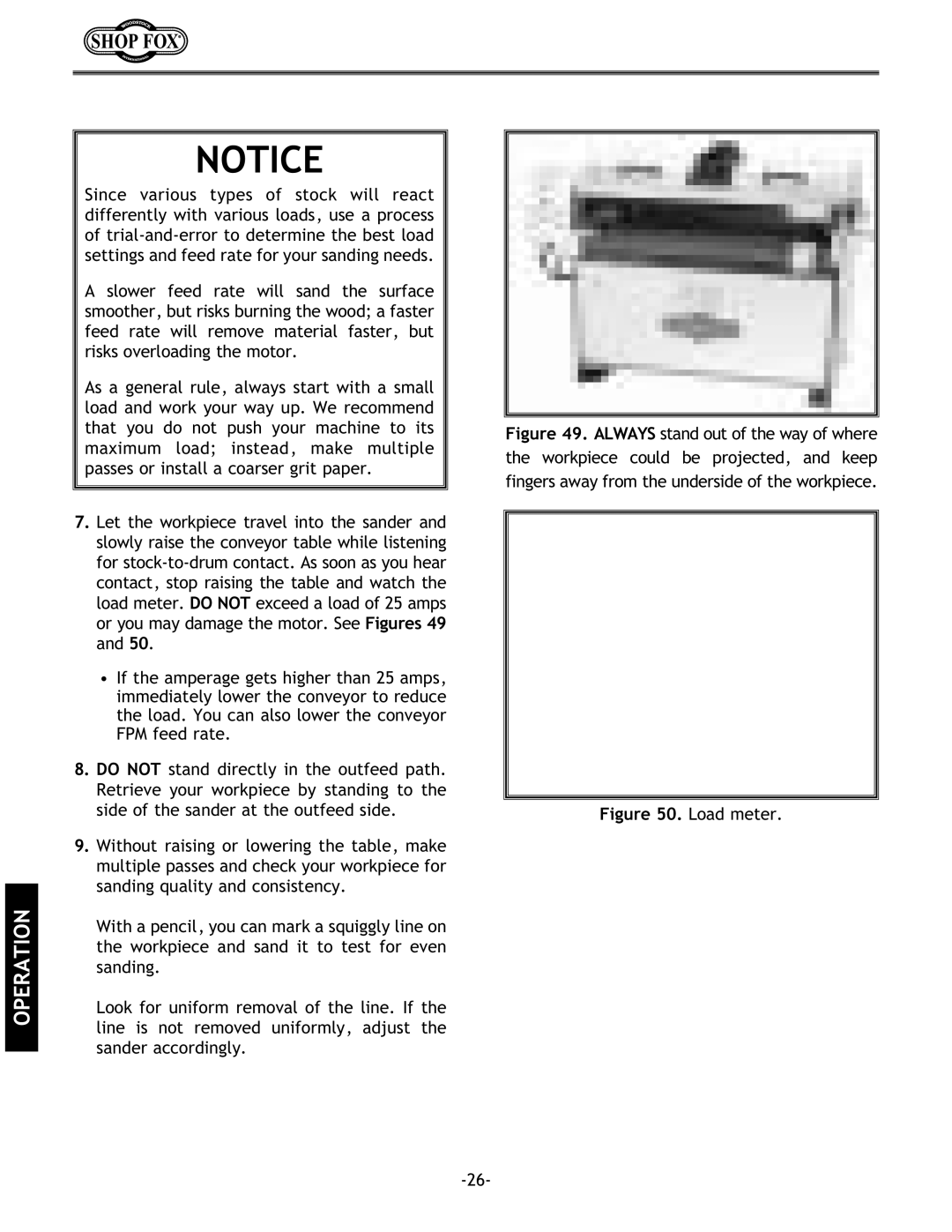
OPERATION
NOTICE
Since various types of stock will react differently with various loads, use a process of
A slower feed rate will sand the surface smoother, but risks burning the wood; a faster feed rate will remove material faster, but risks overloading the motor.
As a general rule, always start with a small load and work your way up. We recommend that you do not push your machine to its maximum load; instead, make multiple passes or install a coarser grit paper.
7.Let the workpiece travel into the sander and slowly raise the conveyor table while listening for
•If the amperage gets higher than 25 amps, immediately lower the conveyor to reduce the load. You can also lower the conveyor FPM feed rate.
8.DO NOT stand directly in the outfeed path. Retrieve your workpiece by standing to the side of the sander at the outfeed side.
9.Without raising or lowering the table, make multiple passes and check your workpiece for sanding quality and consistency.
With a pencil, you can mark a squiggly line on the workpiece and sand it to test for even sanding.
Look for uniform removal of the line. If the line is not removed uniformly, adjust the sander accordingly.
